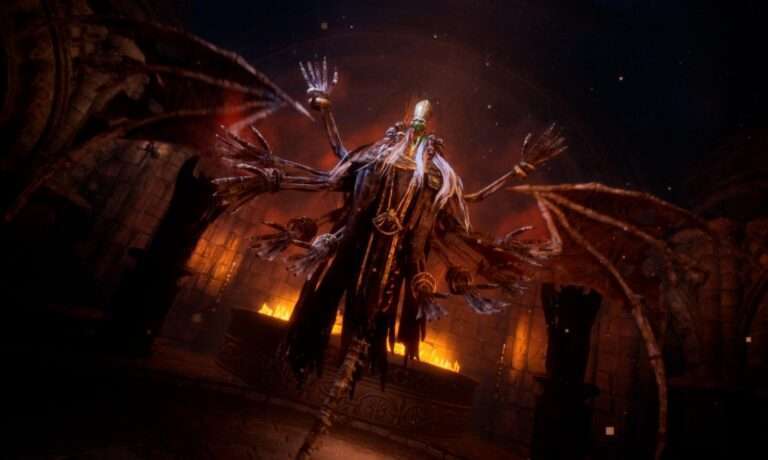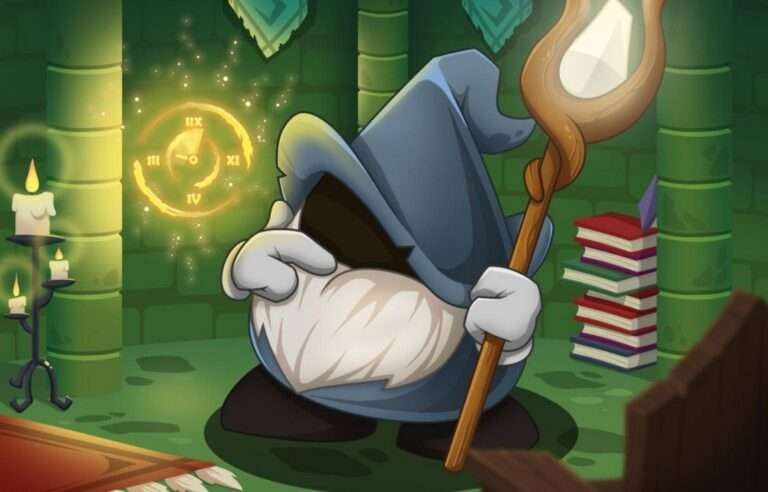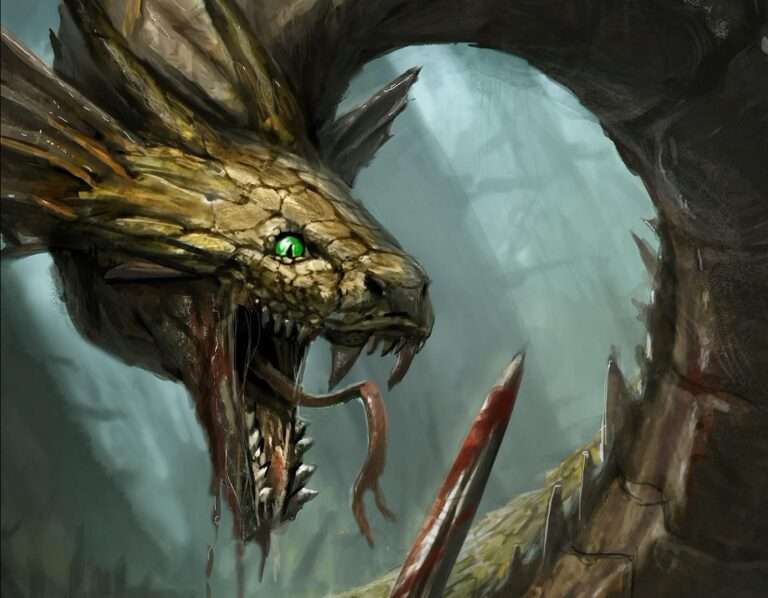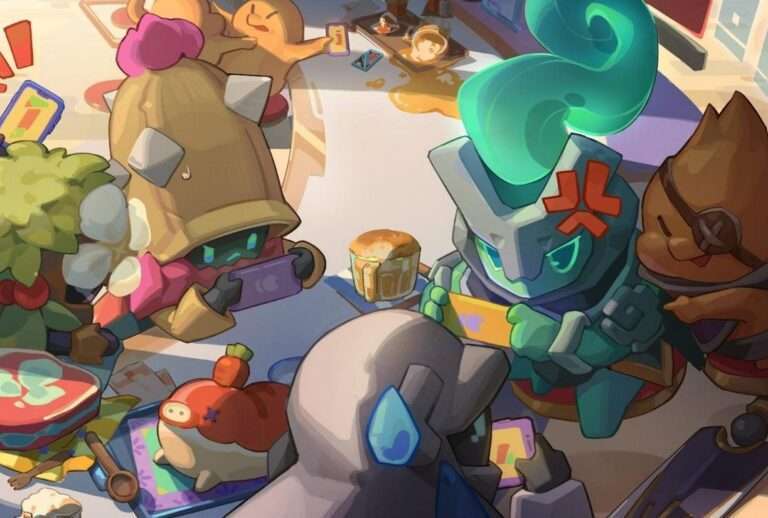RavenQuest – Vampiric Spellblade Build (Early / Mid Game)
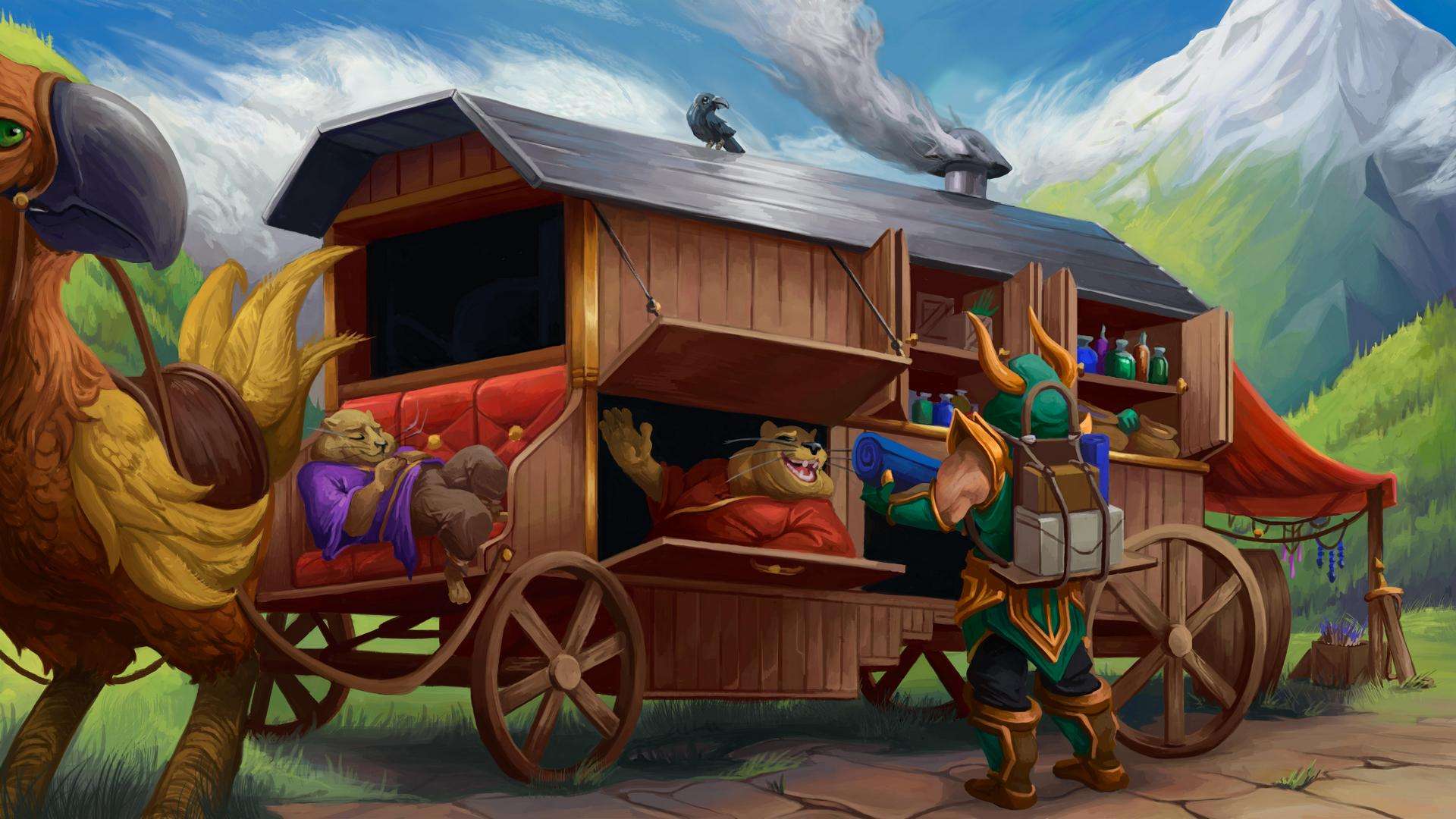
Vampiric Spellblade Guide (PvE / 50 Skill Points)
Ву Coltburn.
First of all, I have to stress that this build is only recommended if you have the Polar Bear (Feasting Strike) card. If you’re looking for a magic build with a lot of life sustain, Spellblade is for you.
Why Spellblade? Well, Spellblade is an excellent magic class for early/mid game, where there aren’t many large hunting grounds. But don’t be fooled, it’s still possible to hunt in areas with this build, but the main focus is on single targets.
Equipment
Weapon: Light Blade Int/Vit/Dex + Spell Power/Weapon Defense/Impact
This weapon has adaptive damage. This means that the auto attacks it causes can be either physical or magical, depending on which of the player’s attributes is higher (weapon power or spell power), making it the only weapon that can cause magical melee damage with a higher attack speed.
Set: All 3 types are viable in some way.
- Leather – Int/Vit + Weapon Defense/Spell Power
- Plate – Int/Vit + Spell Power/Weapon Defense/Precision
- Cloth – Int/Vit + Spell Power/Weapon Defense/Precision
Primary and secondary attributes in order of priority.
After the buff to increase critical chance in the Leather set, it became a viable choice for early and mid game, leaving the player with a base critical chance of 25% (Set bonus + base chance).
Attribute Points: Full INT or every 3 points, 2 in INT and 1 in VIT.
Archetypes
Warfare
Warfare, in this build, is only intended to serve as the player’s main source of sustain.

Sustain
- Skill: Feasting Strike + Polar Bear Card
- Passives: Bloodbath, Bloodseeker.
With the Feasting Strike skill equipped with the Polar Bear card, for 10 seconds after use (does not spend Aether), the player gains a life steal on their auto-attacks. The base percentage is 30% lifesteal in the card’s first tier and increases by 3% with each subsequent tier.
Fun fact: the skill, maximized at level 4, causes the duration of the life steal to have a downtime of only 3 seconds of recharge time, however, it is only feasible to maximize in the end game.

- Bloodseeker: There’s no secret to this one. Just a basic 20% auto-attack lifesteal.

- Bloodbath: This is where the secret lies.
Bloodbath is a passive that, with each stack, increases the player’s auto-attack damage by 0.75%, for a total increase of 75% with 100 stacks. In other words, the more damage you do with the auto-attack, the more you heal with the Feasting Strike and Bloodseeker skills.
Why should I use a Light Blade?
As the only fast-attacking melee weapon that deals magic damage, the Light Blade makes the player accumulate Bloodbath stacks much faster than other weapons, as melee weapons accumulate 5 stacks per attack, while ranged weapons only accumulate 1 stack per attack.
Two-handed melee weapons also accumulate 5 stacks per damage, but have a lower attack speed than Light Blade and dual-wield weapons.
Example: Two-handed weapons have 2 seconds of base attack speed, while the Light Blade has 1 second of base attack speed, thus stacking Bloodbath twice as fast.
It’s worth noting that, even though Light Blade hits faster, each hit deals only half the damage of a two-handed melee weapon, but since it hits 2x faster, over 2 seconds, both will deal the same damage. Another thing is that melee weapons naturally deal 33% more damage on auto-attack compared to ranged weapons.
Witchcraft
Skills and Passives

- Arcane Pulse: Basic attack option that breaks through the target’s defenses.
- Ravencard: Ghostlamp Hag

- Curse: Basic skill that causes DoT (Damage over Time) in single targets.
- Ravencard: Hog Cultist

- Leech: Single-target DoT skill that heals the player based on the damage dealt.
- Ravencard: Both cards are viable, but their applications are different.
- Vampire Necromancer – when the player is below 60% health, the Leech will heal more.
- Rubycap Mushroom – auto-attacks on targets affected by Leech, gain a life-stealing effect. Similar to Warfare’s Bloodseeker.

- Arcane Torrent: Single-target channeling skill.
- Ravencard: Skorn Warlock

- Eternal Worms: Consumes up to 3 DoTs from the target, dealing 50% of the remaining damage and healing 60% of the damage dealt.
- Ravencard: Saltdusk Ritualist

- Siphon: Mana drain skill, very good for recovering your mana without having to spend potions.
- Ravencard: Orc Spellcaster
Passive

- Cursed Touch: Increases damage dealt with DoTs by 20%.

- Witchcraft Mastery: Reduces Global Cooldown Time by 10%. Not to be confused with Cooldown Time Reduction. In other games you probably know it as After Cast Delay or other terms. In a nutshell, after using a skill, we have a waiting time between one skill and the next, and the Global CD reduction reduces this waiting time.

- Bloodmancer: Causes your DoTs to heal the player for 10% of the damage dealt.
Wizardry
Skills and Passives

- Fireball: Basic attack option, with good synergy with Witchcraft’s DoT passives.
- Ravencard: Chainwraith Haunt.

- Frostbolt: Basic attack option focused on the interaction of the ravencard Icicle Gazer with the Frost Lance skill for a build focused more on single targets.
- Ravencard: Icicle Gazer – In short, this card causes the target to enter the Frostbite state every 3 stacks of Frostbolt, causing Frost Lance to deal critical damage with a 100% chance for 4 seconds and also ignoring 25% of Spell Defense.

- Erupt: One of the strongest Tier 2 skills that causes DoT, synergizing well with Witchcraft.
- Ravencard: Hog Saboteur

- Combustion: Area control/damage skill, good for stunning creatures around you.
- Ravencard: Emberscale Drake.

- Flame Tornado: Area channeling skill. Be careful, because while you’re casting it, you won’t be able to make auto-attacks. Always use after Leech and Cold Blast.
- Ravencard: Flamelord Djinn – great synergy with Witchcraft, as this card causes the skill to accumulate DoT stacks on targets.

- Coldblast: Area damage/control skill that roots targets.
- Ravencard: Iceshell Giant – causes Coldblast to cause a DoT every 2 seconds on targets hit for 6 seconds. Again, great synergy with Witchcraft.

- Icestorm: Basic area damage skill with channeling.
- Ravencard: Both cards are viable, it will depend on your taste.
- Iceforge Frostcaller – causes the skill to have no channeling, but its damage is reduced.
- Blizzard Beast – remains channeling, but increases damage. If you choose this card, bear in mind that it works in the same way as Flame Tornado, i.e. always use it after Leech and Cold Blast.

- Frost Lance: Single-target burst skill.
- Ravencard: Frostrisen Magus – makes it so that if Frost Lance deals critical damage, its cooldown is RESET. Also increases Frost Lance’s critical damage.

- Teleport: Movement skill. Extremely important for positioning yourself and fitting area skills or escaping from trouble.
- Ravencard: Lurking Shadow – causes the player to gain bonus Spell Power for 6 seconds after using Teleport.
Passive

- Havoc: Wizardry’s main passive, especially if you have a good crit chance rate. It gives your critical hits (both damage and healing) a 15% chance of giving the player a 7% bonus to their total Spell Power, stacking up to 3 times. One of the strongest passives in the game, I’d say.
Particularly in the early/mid game, I like to use a Leather set precisely for this reason. With up to 5 Life Steal Sources, DoTs and fast auto-attacks, a lot of crits go up on the screen (Life Steal heals can also crit), making it easy to proc Havoc.

- Amplification: Increased damage to your skills at the cost of increased mana or life consumption (Warfare skills).

- Frost Armor: Passive shield based on the damage you deal within a period of time.
Gameplay Tips
- Before casting channeling skills such as Arcane Pulse, Flame Tornado and Icestorm, always use Leech on another target to make the most of the Leech’s duration and maintain a sustain while channeling a skill, because during the channeling of a skill, the player is unable to perform auto attacks, consequently not having the sustain of Warfare at that time. For these situations, I like to use the Vampire Necromancer card, otherwise I use Rubycap Mushroom.
- Coldblast with the Iceshell Giant card causes DoTs on ALL targets hit. Take advantage of this with Bloodmancer from Witchcraft.
- Erupt with the Hog Saboteur card makes it so that each time damage is dealt, it has a chance to deal additional damage to the target (this damage does not count as DoT). The chance is 2.5% per stack of Erupt on the target. The maximum number of stacks is 8, giving a total of 20% chance of dealing additional damage (the damage increases according to the rarity of the card).
Suggested Skill Points Distribution
Click to enlarge…
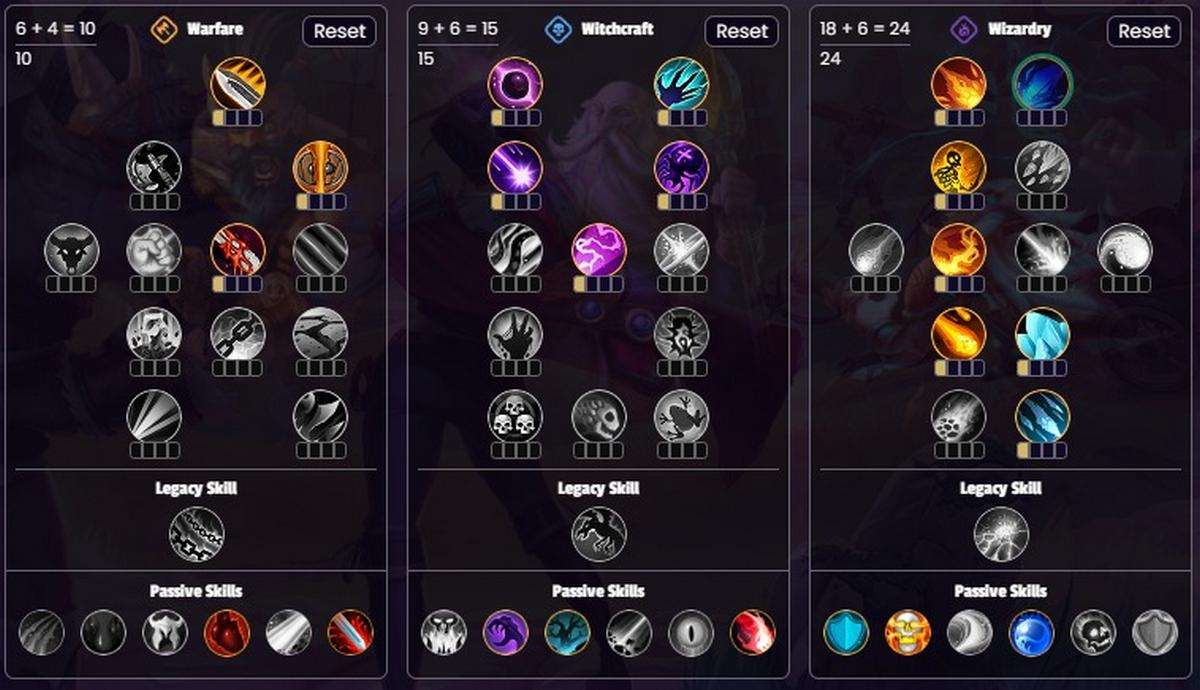
This is just a suggestion for skill points distribution, don’t take it literally. Test and reset your build whenever you need to, after all, it’s a very low cost. Based on all the information I’ve provided, develop your gameplay in your own way.

